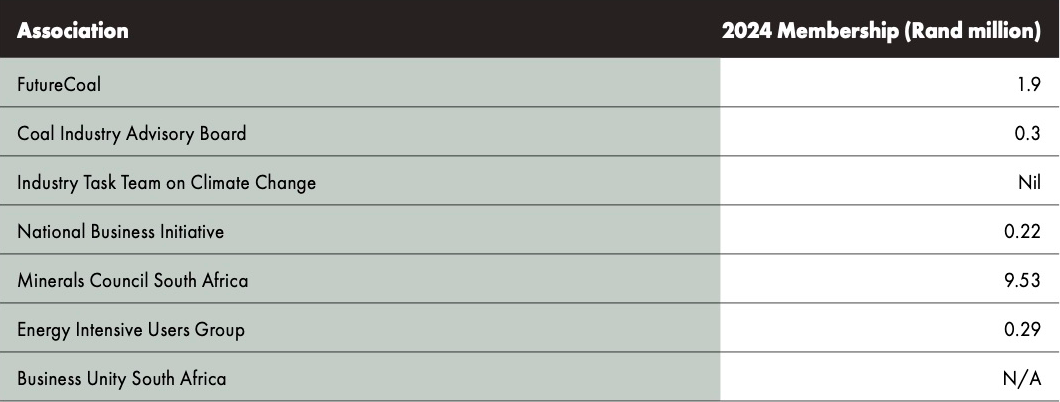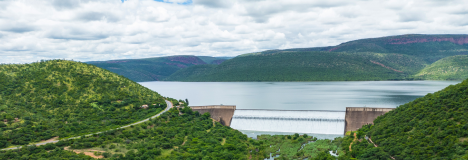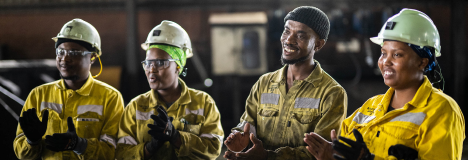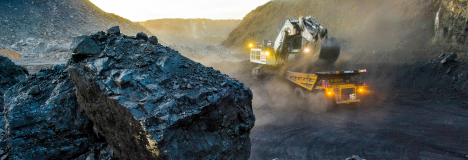Any climate-related advocacy that we undertake or that is undertaken on our behalf through a third party, such as an industry association, should be in line with the letter and the spirit of our stated policy positions, and supportive of the goals of the Paris Agreement. We believe that effective policy is essential for providing the right framework of drivers and incentives to encourage coordinated, efficient and equitable response measures. There may be times when our views diverge from those of our trade association partners, in which instance we aim to ensure our views are noted and recorded.
We advocate for the accelerated deployment of all emission reduction technologies (per Article 10.2 of the Paris Agreement), including coal abatement technologies such as high-efficiency, low-emission coal-fired power plants and CCUS. We also encourage the development of low- and lower-carbon sectors such as renewables and gas, respectively. In all our climate advocacy activities, we are committed to compliance, transparency and accountability.
We transparently disclose our memberships of industry associations. Each entry below explains why we are a member of that association, any positions of responsibility that Thungela employees hold and our annual financial contribution. This disclosure enables interested parties to review our memberships and raise any questions or concerns.
We pay annual membership fees to industry associations, with the amount based on each association. We also pay extra fees for specific projects when needed.

Risks and opportunities
As a large mining company, we face numerous risks, many of which are volatile and uncertain. Managing these risks effectively requires agile decision-making and effective risk management strategies that mitigate exposure and harness available opportunities.
The board’s sub-committees oversee the integrated risk management process and receive regular feedback from management on all risk-related activities. They regularly assess all risk governance structures and lines of defence to ensure that roles, responsibilities and accountabilities for identifying, managing, mitigating, reporting and escalating risks and opportunities within the business are appropriately defined and responded to.
Climate risks are integrated into the baseline risk registers at all sites, and are managed as part of the integrated risk management process. Thungela’s risk management approach is described in more detail on page 164 of this report and on page 34 of the Integrated Annual Report.
Understanding our exposure to climate-related risks and opportunities
The future pathway of climate-related risks and opportunities remains highly uncertain. We have used broad scenarios, as defined by the Intergovernmental Panel on Climate Change (IPCC) and the IEA, as potential pathways (defined on page 60) to help understand the potential risks and opportunities our business is exposed to with respect to climate change over two timelines: nearterm (2030) and long-term (2050). This quantitative assessment included an examination of relevant acute and chronic physical climate risks, as well as market and regulatory risks, and changes in exposure under various climate scenarios.
These are grouped into two categories:
- Transition risks: These relate to the potential impacts on product demand, as well as impacts on the costs of production across our value chain associated with regulatory, technological and behavioural changes in the transition to a low-carbon economy.
- Physical risks: These relate to the potential impact on our operations, supply chain and surrounding communities from acute extreme weather events, as well as chronic shifts in climate patterns.
We address the resilience of our operations and host communities by ensuring that our sites include climate risk as part of their baseline risk assessments, and that our technical standards and guidelines include climate risks and responses. Furthermore, we aim to ensure that Social and Labour Plan (SLP) and corporate social investment (CSI) projects address climate-related risks and contribute to climate adaptation and resilience.















